Results 11,991 to 12,000 of 12089
Thread: Anandtech News
-
01-10-24, 07:45 AM #11991
Anandtech: The Intel CES 2024 Pat Gelsinger Keynote Live Blog (Starts at 5pm PT/01:00
This evening is the biggest PC-related keynote of CES 2024, Intel's "prime" keynote with CEO Pat Gelsinger. Part of Intel's "AI everywhere starts with Intel" campaign for the show, Gelsinger is expected to talk about the role AI will play in the future of consumer technology, along with the economic implications.
So come join us at 5pm Pacific/8pm Eastern for a look at the latest from Intel!
More...
-
01-10-24, 03:34 PM #11992
Anandtech: MSI Announces the Claw: A Handheld PC Game Console with Intel's Meteor Lak
The success of Valve's Steam Deck console has clearly inspired numerous makers of gaming hardware to try their luck with portable gaming systems. One of such companies is MSI, which introduced its Claw handheld console at CES. The Claw A1M mobile console uses Intel's latest Core Ultra 'Meteor Lake' platform along with Windows 11 operating system and is compatible with the vast majority of PC games.
MSI's Claw game console is equipped with a 7-inch touch-enabled IPS LCD display with a 1920x1080 resolution, a 120 Hz refresh rate, and an up to 500 nits typical brightness (which is akin to luminance of premium laptops), which is similar to what Asus ROG Ally offers. As for audio, the gaming device comes equipped with two 2W speakers.
The Claw A1M console is powered by Intel's latest Core Ultra 155H 'Meteor Lake' system-on-chip with six high-performance cores, eight energy-efficient cores, two low-power cones, and a built-in Arc GPU with eight Xe tiles (1024 stream processors, eight ray tracing units). The processor is paired with 16 GB of dual-channel LPDDR5-6400 memory and an SSD in an M.2-2230 form-factor as well as a PCIe Gen4 x4 interface.
To ensure consistent performance of the unit under high loads, MSI equipped it with a cooling system featuring several heat pipes and two fans. Keeping in mind that the processor has a minimum assured power of 20W and a processor base power of 28W, it indeed needs proper cooling. That cooling system of course adds quite some weight, which is why the console weighs 675 grams.
On the connectivity side of matters, MSI's Claw certainly does not disappoint as it features an Intel Killer BE1750 Wi-Fi 7 + Bluetooth 5.4 adapter, a Thunderbolt 4 connector (which naturally supports a DisplayPort output and charging capability), a microSD card reader, and an audio jack for headsets.
As for ergonomics, MSI's Claw has a typical set of controllers, including two sticks, a D-Pad, bumpers, ABXY buttons, and triggers. In addition, MSI equipped its Claw with macro buttons, to make playing games that require tricky combinations on the controller easier.
MSI says that its Claw can work for up to two hours from its 53 Wh battery, which is something to expect given the processor it uses and capacity of the battery. Perhaps, those who would like to enjoy longer gaming sessions while on the go will need to get an external battery and use the TB4 port to charge the console rapidly.
Two distinctive features of MSI's Claw portable game console is MSI's Center M dedicated interface that provides easy access to games as well as App Player that allows to play Android games on the Windows 11 device. There are of course similar emulators available for all Windows PCs, but at least MSI pre-installs the player by default.
For now, MSI remains tight lipped about pricing and launch date for its Claw portable game console.
More...
-
01-11-24, 10:24 PM #11993
Anandtech: Frore Unveils AirJet Mini Slim: Solid-State Active Cooler Gets Slimmer and
Frore Systems has introduced a revamped version of its AirJet Mini solid-state active cooling system at CES 2024. The new AirJet Mini Slim device retained performance of its predecessor (the AirJet Mini), but is slightly thinner, slightly lighter, and smarter too, as it can now clean itself and sense its temperature.
On performance side of matters, the AirJet Mini Slim generates 1750 Pascals of back pressure and can dissipate up to 5.25W of heat (at 85°C die temperature and at 25°C ambient temperature), which is in line with its predecessor. It also maintains an identical footprint of 27.5 x 41.5 mm as the original solid-state active cooling system.
Overall, there are two key enhancements in the AirJet Mini Slim compared to its predecessor: its thickness has been reduced to just 2.5mm, coming down from the previous 2.8mm; and it has become lighter, now weighing a mere 8 grams, down from 9 grams.
Another significant upgrade of the AirJet Mini Slim is its intelligent self-cleaning system, which reverses the airflow to remove any accumulated dust in the filters to ensure consistent performance of the cooler itself as well as device it is cooling down. Frore says that the capability is backwards compatible with the original AirJet Mini, which probably indicates that it is enabled by firmware or software.
Finally, the AirJet Mini Slim introduces thermal sensor — called Thermoception — that enabled the cooler to independently sense its own temperature and adapt its cooling efficiency as needed. This self-contained function is particularly advantageous for devices that cool down things which do not have their own temperature sensors, such as processors, SSD controllers, and memory chips.
All of the refinements of Frore's AirJet Mini Slim serve two purposes: expand the addressable markets for these solid-state active cooling systems and make them more adaptable to needs of customers.
"Reducing the chip's thickness by 0.3mm is a game-changer for products requiring excellent thermal management in increasingly thinner devices," said Dr. Seshu Madhavapeddy, Founder and CEO of Frore Systems. "AirJet Mini Slim will bring much-needed performance improvements to ultra-thin electronic devices like fanless laptops, tablets, and smartphones."
What remains to be seen is when we are going to see Frore's AirJet Mini Slim in actual devices. While there are numerous companies evaluating the technology, so far there are just a handful of products that have reached the market that use AirJet Minis.
More...
-
01-11-24, 10:24 PM #11994
Anandtech: Micron at CES 2024: USB4 SSD Technology Demonstrations
Micron's consumer brand, Crucial Memory, has been putting extra focus on the SSD market over the last few quarters. The brand was marketing entry-level QLC drives in the 2018 - 2022 time frame. Recently, emphasis has also been placed on cutting-edge SSDs - both internal (such as the Gen4 T500 and Gen5 T700) and external (such as the X10 Pro). Vertical integration, coupled with Micron being the first flash manufacturer to achieve volume production of 200+ layer 3D NAND, has been crucial to Crucial's success in these segments.
At the 2024 CES, Micron had a couple of interesting USB4 SSD technology demonstrations for its resellers / partners and invited media. These are essentially products under development (with no guarantees that they would make it to the market in their current form). Both products are bridge-based solutions using the ASMedia ASM2464PD USB4 to NVMe accessory controller. The key update over the popular ASM2364 (USB 3.2 Gen 2x2 upstream, and PCIe 3.0 x4 downstream) is the shift to a 40 Gbps USB4 upstream port along with a PCIe 4.0 x4 link downstream. The power delivery component of the Type-C specification is also implemented within the controller.
The portable SSD version has a gumstick form-factor, with the transparent casing housing a M.2 2280 SSD - a 2TB Gen4 Micron 3400 OEM drive in this case.
The drive is expected to be passively cooled, with the larger form-factor enabling a thermal performance similar to that of the X10 Pro / X9 Pro. Bridge-based solutions are the standard option for high-performance portable SSDs.
Similar configurations (bridge + DRAM-equipped M.2 SSD) such as the SanDisk Extreme PRO v2 (E81) have yielded excellent all-round performance for a wide range of workload types. We expect the same to continue in the USB4 era. That said, vendors like ADATA using the same bridge have opted for active cooling to avoid thermal throttling in their USB4 PSSD. It remains to be seen if this design will remain fanless in its final form (and if it does, thermal performance would be an interesting aspect to analyze).
The USB4 desktop SSD is a comparatively unique product. This is an actively cooled design with a small fan, and uses a U.3 SSD inside. Other vendors like OWC have tried multiple M.2 SSDs configured with software RAID in a large-sized enclosure, but this one has a single high-capacity drive (8TB in the sample being demonstrated).
Designed for stacking (without daisy-chaining support), the eSSD also requires external power. The drive can also power notebooks through the USB4 connection, which can make up for the presence of a discrete power adapter. Specifics of the power delivery will only be available when the product is officially introduced. This product could be made more attractive by having some downstream USB Type-A / Type-C ports (eSSD in a dock). That said, there are two aspects that will probably make this the performance and consistency king of USB4 SSDs - the presence of a fan, and the use of a Gen4 U.3 SSD (which is most likely an enterprise drive that advertises worst-case performance and not speeds in the SLC cache region).
The current crop of USB4 SSDs are focused on performance, and sacrifice power- and energy-efficiency. Those aspects will be addressed by native USB4 UFD controllers like Phison's U21. Silicon Motion tends to keep controllers under wraps until reference designs are ready to ship (if the introduction of the SM2320 was anything to go by). We expect external / portable SSD vendors to eventually add native UFD controller-based products to their USB4 lineup, but that seems unlikely to happen in the first half of 2024.
Gallery: Micron at CES 2024: USB4 SSD Technology Demonstrations



More...
-
01-12-24, 08:28 AM #11995
Anandtech: Asus Unveils Dual-Screen Laptop: Zenbook Duo with two 14-inch OLED Display
Modern higher-end 14 and 16-inch-class notebooks offer performance that is enough for the vast majority of productivity and even content creation workloads. As a result, the main limitation of notebook's capabilities in many cases is their insufficient screen real estate. Over the past few years, several leading PC makers have made numerous attempts to fix this (e.g., Lenovo's Yoga Book 9i, Razer's Valerie, and Apple's Sidecar). Now, it is time for Asus to demonstrate its vision.
The Asus Zenbook Duo (UX8406) is a dual-screen 14-inch-class laptop with a detachable keyboard that works as a classic notebook with one display, a machine with two touchscreens, a laptop with two monitors, or a desktop mode. The notebook takes some pages from Lenovo's Yoga Book 9i, but Asus certainly wanted it to be more appealing to those used to classic notebooks but who dare to try something new, not the other way around.
The Asus Zenbook Duo has a thickness of 1.9 cm (0.75 inches) and weighs 1.4 kilograms (3.09 lbs), thinner and lighter than Apple's MacBook Pro 14. The premium version of the machine comes with two 3K 120Hz OLED 120Hz screens (with VESA's True Black 500 badge) and a kickstand to make it possible to use two screens in vertical mode. By contrast, an affordable version of the laptop is equipped with two 2K 60Hz OLED screens.
On the performance side of matters, the Asus Zenbook Duo (UX8406) is based on up to Intel's Core Ultra 9 185H 'Meteor Lake' processor (16 cores, 22 threads) with integrated Arc graphics that can be paired with up to 32 GB of LPDDR5X memory, and up to 1 TB of SSD storage with a PCIe 4.0 interface.
As for connectivity, the Asus Zenbook Duo (UX8406) features a Wi-Fi 6E + Bluetooth adapter, two Thunderbolt 4 connectors, an HDMI 2.1 display output, a USB 3.2 Gen 1 Type-A port, and a 3.5-mm audio jack for headsets.
To ensure long battery life (up to 13.5 hours with one screen and up to 10.5 hours on two screens of video playback), Asus equipped its Zenbook Duo with a rather massive 75Wh battery.
For now, Asus does not disclose the pricing of its Zenbook Duo (UX8406) or when it is set to be available. Meanwhile, since the company has disclosed all the specifications, we have every reason to believe the notebook will be available sooner rather than later. As for the price, this is an innovative premium notebook so that it will be priced accordingly. Interestingly, to add value to the laptop, Asus plans to include a backpack and stylus in some countries' product bundles.
Source: Asus
Gallery: Asus Unveils Dual-Screen Laptop: Zenbook Duo with two 14-inch OLED Displays

More...
-
01-12-24, 07:15 PM #11996
Anandtech: EK Reveals All-In-One Liquid Cooler for Delidded CPUs
Historically, delidded CPUs have been the prerogative of die-hard enthusiasts who customized their rigs to the last bit. But with emergence of specially-designed delidding tools, removing the integrated heat spreader from a CPU has become a whole lot easier, opening the door to delidding for a wider user base. To that end, EK is now offering all-in-one liquid cooling systems tailored specifically for delidded Intel LGA1700 processors.
The key difference with EKWB's new EK-Nucleus AIO CR360 Direct Die D-RGB – 1700 cooler is in the cooling plate on the combined base pump block. While the rest of the cooler is essentially lifted from the company's premium 360-mm closed-loop all-in-one liquid cooling systems, the pump block has been equipped with a unique cooling plate specifically developed for mating with (and cooling) of delidded Intel's LGA1700 CPUs.
Meanwhile, since delidded CPUs lose the additional structural integrity provided by the IHS, EK is also bundling a contact frame with the cooler that is intended to protect CPUs against warping or bending by maintaining even pressure on the CPU. A protective foam piece is also provided to prevent liquid metal from spilling over onto electrical components surrounding the CPU die.
According to the company, critical components of the new AIO, such as its backplate and die-guard frame, were collaboratively developed by EK and Roman 'Der8auer' Hartung, a renowned German overclocker who has developed multiple tools both for extreme overclockers and enthusiasts. In addition, EK bundles Thermal Grizzly's Conductonaut liquid metal thermal paste (also co-designed with Der8auer) with the cooling system.
And since this is a high-end, high-priced cooler, EKWB has also paid some attention to aesthetics. The cooler comes with two distinct pump block covers: a standard cover features a brushed aluminum skull, surrounded by a circle of LED lighting that creates a classic yet bold aesthetic, and an alternate, more minimalist cover without the skull.
Traditionally, cooling for delidded CPUs has been primarily handled by custom loop liquid cooling systems. So the EK-Nucleus AIO CR360 Direct Die D-RGB – 1700 stands out in that regard, offering a self-contained and easier-to-install option for delidded CPUs. Especially as delidding has been shown to reduce temperature of Intel's Core i9-14900K CPU by up to 12ºC, it's no coincidence that EKWB is working to make delidding a more interesting and accessible option, particularly right as high-end desktop CPU TDPs are spiking.
Wrapping things up, EKWB has priced the direct die cooler at $170, about $20 more than the EK-Nucleus AIO CR360 Lux D-RGB cooler designed for stock Intel processors. The company is taking pre-orders now, and the finished coolers are expected to start shipping in mid-March 2024.
More...
-
01-13-24, 12:28 PM #11997
Anandtech: Network-Attached Storage Market Update: ASUSTOR, Terramaster, and QNAP Int
The network-attached storage (NAS) market had a break-out decade in the 2010s, with a large number of vendors trying to get a slice of the pie. Brands such as EMC / Lenovo and Thecus have fallen by the wayside, and even established storage vendors like Seagate decided to drop out of the market. QNAP and Synology have held firm in the commercial off-the-shelf (COTS) NAS market meant for home users, prosumers, SOHO, and SMB installations. ASUSTOR (backed by ASUS) has also been regularly releasing NAS units since their first product appeared in late 2012. TerraMaster released their first NAS around the same time, but opted to focus more on the direct-attached storage segment throughout the 2010s. The brand has shown renewed interest in the NAS market over the last few years. Despite the cut-throat competition in the COTS NAS market, some Asian vendors are attempting to get a toe-hold after establishing themselves in allied markets. UGREEN, a consumer electronics brand known for its power banks, chargers, USB adapters, and docks has also announced its entry into the NAS market, but we will cover that in a separate article.
Asustor, Buffalo, QNAP, Synology, TerraMaster, and Western Digital are currently the main options available for users looking to purchase a COTS NAS for SOHO / SMB use. Out of these, Buffalo and WD update their hardware options only once every 3 or 4 years. The others have a more regular cadence to their portfolio additions while continuing to maintain software support for the legacy units - sometimes even NAS units released as far as 10 years ago.
CES has usually been a good platform for NAS vendors, allowing them to show their latest and greatest in both hardware and software, and occasionally announce new models. However, the allure has been lost in recent years. It started with Synology and QNAP starting their own conference aimed towards partners / resellers and developers. Eventually, CES became relatively quiet for this market segment. Other business conferences focused on virtualization, security etc. are turning out to be better events for these NAS vendors. Overall, CES is no longer an important show for the NAS market. Having said that, the rest of this piece captures some of the announcements made in the NAS space around the 2024 CES time-frame.
At the 2024 CES, UGREEN made a big splash with the hardware options for their upcoming NASync series. Synology's booth rehashed units that have been around for a major part of 2023. A chuckle-worthy DS224+ (using an ancient Intel Celeron J4125) was also on display. ASUSTOR had a tiny presence in ASUS's suite, and the other NAS vendors gave the show a miss.
ASUSTOR Drivestor Lite and Drivestor 2/4 Pro Gen2 : Arm NAS with btrfs Support
ASUSTOR has updated their lineup of Arm-based NAS units for home / personal use, and the units are already available for purchase. The new Drivestor 2 Lite, 2 Pro Gen2, and 4 Pro Gen2 use a new Realtek processor - the RTD1619B. This is a quad-core Cortex-A55 SoC with the CPU running at 1.7 GHz. The Arm Mali-G51 MP3 in the SoC is clocked at 650 MHz. This lineup takes over the Drivestor 2, 4, 2 Pro, and 4 Pro units which had the Realtek RTD1296 (quad-core Cortex-A53 at 1.4 GHz). The increased processing power in the new processor, coupled with a new SDK from Realtek, has now allowed ASUSTOR to bring btrfs support in this lineup.
Despite using the same SoC, the Lite model differentiates itself from the Pro model by opting for half the RAM, and restricting itself to a 1 GbE LAN port (compared to the 2.5 GbE in the Pro ones). Two USB 3.2 Gen 1 Type-A ports in the Pro models are placed by a USB 2.0 port in the Lite model. There are two drive bays, but the drives themselves are not hot-swappable. ASUSTOR is promoting the transcoding performance of the new performance and portraying the Drivestor 2 Lite as a capable NAS for Plex and their own 'LooksGood' application.
The Pro Gen2 models have hot-swappable bays. In addition to the hardware configuration updates, ASUSTOR is promoting a different set of applications such as Portainer (Docker) compared to the Lite model. The differences in the specifications are brought out in the table below.
ASUSTOR has moved to the same platform adopted by Synology for the DS223 and other 23-series personal / home NAS models, keeping pace with the processing power offered by the competition. The introduction of btrfs support in this lineup now brings easy snapshots (and a bit of ransomware protection) to ASUSTOR's customers at an affordable price point.ASUSTOR 2024 Drivestor Lineup Model Drivestor 2 Lite Drivestor 2 Pro Gen2 Drivestor 4 Pro Gen2 ID AS1102TL AS3302T v2 AS3304T v2 SoC Platform Realtek RTD1619B
(4x Cortex-A55 @ 1.7 GHz / Arm Mali-G51 MP3)RAM 1 GB DDR4 (Soldered) 2 GB DDR4 (Soldered) OS Storage 8GB eMMC Internal Storage / Bays 2x 3.5" SATA 4x 3.5" SATA I/O Ports 1x USB 3.2 Gen 1
1x USB 2.03x USB 3.2 Gen 1 Network Ports 1x RJ-45 (1 GbE) 1x RJ-45 (2.5 GbE) Power Adapter 65W (External) 90W (External) Dimensions and Weight 165mm x 102mm x 218mm / 1.14 kg 170mm x 114mm x 230mm / 1.6 kg 170mm x 174mm x 230mm / 2.2 kg Price $175 $269 $339
TerraMaster 424 and 424 Pro: High-Performance 2.5 GbE NAS Units with Alder Lake-N
TerraMaster recently updated their entry-level x86 NAS lineup for SOHO / SMB setups. This segment was served last year by the 423 series based on Jasper Lake (Celeron N5095). The 424 series utilizes Alder Lake-N. With Intel promoting an octa-core configuration as a Core i3 in this series, TerraMaster is also launching a 424 Pro utilizing the Core i3-N300.
The specifications of the three units are summarized in the table below.
The TNAS operating system (TOS) is currently at 5.1, with the release of TOS 6.0 in the near future. Being a comparatively new entrant to the NAS world, the OS and mobile applications lack the polish of the offerings from established vendors, but the good news is that things can only improve from here. The hardware itself is quite capable, and the new 424 series is the first Alder Lake-N-based COTS NAS that we have seen for purchase. Terramaster had earlier experimented with a 10 GbE NAS using Apollo Lake, though it was unable to saturate that interface. The company seems to have opted for a more cost-effective platform with Alder Lake-N in the 424 series.TerraMaster 424 NAS Series (Alder Lake-N) Model F2-424 F4-424 F4-424 Pro SoC Platform Intel N95
(4x Gracemont @ up to 3.4 GHz / Intel UHD Graphics)Intel Core i3-N300
(8x Gracemont @ up to 3.8 GHz / Intel UHD Graphics)RAM 1x 8 GB DDR5-4800 SODIMM (Expandable to 1x 32 GB) 1x 32 GB DDR5-4800 SODIMM Internal Storage / Bays 2x 3.5" SATA
2x M.2 2280 Gen3 x4 NVMe4x 3.5" SATA
2x M.2 2280 Gen3 x4 NVMeI/O Ports 1x USB 3.2 Gen 2 (Type-A)
1x USB 3.2 Gen 2 (Type-C)Network Ports 2x RJ-45 (2x 2.5 GbE) Power Adapter 40W (External) 90W (External) Dimensions and Weight 222mm x 119mm x 154mm / 2.2 kg 222mm x 179mm x 154mm / 3.4 kg Price $380 $500 $700
QNAP Ryzen 7000 Rackmounts, Wider TBS-h574TX NASBook Availability and Application Updates
QNAP remains busy throughout the year, regularly announcing hardware with the latest and greatest from Intel / AMD / ARM-based SoC vendors. The company also takes pride in updating different 'plugins' / first-party applications for their QTS / QuTS Here operating systems to increase their usefulness. Similar to Synology, the focus is slowly shifting more towards business users as a majority of their recent announcements have been related to their ZFS-enabled QuTS Hero-running NAS units.
At the 2023 CES, the company had teased their first consumer-focused hot-swappable all-flash NAS with M.2 / E1.S SSD support. The TBS-h574TX reached retail in late 2023, and QNAP uploaded a comprehensive video detailing the usage and features of the unit last month. After participating in the launch webinar prior to that, my expectations were tempered a bit. In the year since its teaser, the E1.S form-factor has not taken off as expected. Instead, we saw vendors like Solidigm and Micron focus on the traditional 2.5" form-factor with U.2 and U.3 SSDs. E1.L is making more sense for rackmount machines requiring very high storage density, but the general market trend seems to be more towards U.2 / U.3 for both consumer and SMB / SME on-premise usage. 2023 also saw the launch of 64TB-class U.2 / U.3 SSDs, and this form-factor seems widely available for purchase.
We believe that the M.2 form-factor in the NAS is better suited for caching and/or non-hot-swappable storage, while U.2 / U.3 makes more sense for hot-swappable units. QNAP pioneered the all-flash consumer NAS with the TBS-464 and ASUSTOR's Flashstor series made additional options available. The TBS-h574TX brings hot-swap into the picture, but some of the drawbacks of the designs still remain. For example, none of the SSD slots get the full four-lane capability, even though they physically accept x4 SSDs. QNAP contends that this is enough to saturate the 10GbE link, but that seems like a trade-off best avoided when it is possible to use the network port along with Thunderbolt (acting in IP mode with only 10 Gb capability per port) to have a 30 GbE up / 30 GbE down configuration. Single-slot occupancy can't deliver full performance in that configuration. In any case, QNAP believes their video production house customers will still find this unit delivering better performance than other options currently available in this form-factor, and they may be right on the practical front.
At $1200, this Raptor Lake-based system is not particularly cheap. Despite using an embedded part (Core i3-1340PE) which comes with in-band ECC support from Intel, QNAP doesn't have that enabled in the system (hopefully it is something that can be addressed in a future update). Overall, this product seems like a missed opportunity for QNAP in the all-flash consumer NAS market.
Moving on to the latest hardware introductions, QNAP is focusing more on ZFS-enabled NAS units now. The company recently introduced two rackmount units based on the Ryzen 7000 series, and their specifications are summarized in the table below.
All models utilize 5GB of flash storage with dual-boot OS protection. ZFS support brings in deduplication and other features important for enterprise deployments. These are some of the first NAS units to support Gen5 M.2 SSDs (albeit, with x2 links), and QNAP advises use of their own heat-sink on them for use in these rackmounts. The redundant power supply configuration is also important in the use-case scenarios for these units, and the available expansion slots allows end users / IT administrators to add 25GbE network cards or SAS / SATA storage expansion cards as required. GPU pass-through is also supported, which can help specific virtualization setups where the VM and associated storage setup run on the same server block.QNAP TS-h77AXU-RP Series (Ryzen 7000 Series) Model TS-h1277AXU-RP-R5-16G TS-h1277AXU-RP-R7-32G TS-h1677AXU-RP-R7-32G Platform AMD Ryzen 5 7600
(6C/12T Zen 4 @ up to 5.1 GHz / AMD Radeon Graphics)AMD Ryzen 7 7700
(8C/16T Zen 4 @ up to 5.3 GHz / AMD Radeon Graphics)RAM (ECC UDIMMs Supported) 1x 16 GB DDR5-5200 UDIMM (Expandable to 4x 32 GB) 1x 32 GB DDR5-5200 UDIMM (Expandable to 4x 32 GB) Internal Storage / Bays 12x 3.5" SATA
2x M.2 2280 Gen5 x2 NVMe16x 3.5" SATA
2x M.2 2280 Gen5 x2 NVMeI/O Ports 2x USB 3.2 Gen 2 (Type-A) Network Ports 4x RJ-45 ([2x 2.5 GbE] + [2x 10GBASE-T]) PCIe Expansion Slots (Slot 1 + Slot 2): (Gen4 x4 + Gen4 x4) or (N/A + Gen4 x8)
Slot 3: Gen4 x4Power Supply 550W x2 Dimensions and Weight (2U) 88.65mm x 432.05mm x 511.3mm / 13 kg (3U) 131.32mm x 482.09mm x 550.93mm / 15.64 kg Price $3299 $3999 $4699
In software news from QNAP, the company is also promoting its machine-learning based drive failure prediction tool that uses a cloud-based engine beyond the traditional SMART readouts. It uses a third-party engine and requires a license purchase for use on more than one disk per NAS. QNAP is also touting its SSD anti-wear leveling features (QSAL) as a differentiating aspect of its QuTS ZFS operating system. These types of value-additions may help QuTS go head-to-head against options like TrueNAS.
More...
-
01-16-24, 12:17 PM #11998
Anandtech: The Be Quiet! Dark Rock Pro 5 CPU Cooler Review: When Less Is More
Last month we took a look at Be Quiet's Dark Rock Elite, the company's flagship CPU tower air cooler. The RGB LED-equipped cooler proved flashy in more ways than one, but true to its nature as a flagship product, it also carried a $115 price tag to match. Which is certainly not unearned, but it makes the Elite hard to justify when pairing it with more mainstream CPUs, especially as these chips don't throw off the same chart-topping levels of heat as their flagship counterparts.
Recognizing the limited audience for a $100+ cooler, Be Quiet! is also offering what is essentially a downmarket version of that cooler with the Dark Rock Pro 5. Utilizing the same heatsink as the Dark Rock Elite as its base, the Dark Rock Pro 5 cuts back on some of the bells and whistles that are found on the flagship Elite in order to sell at a lower price while still serving as a high-end cooler. Among these changes are getting rid of the RGB lighting, and using simple wire fan mounts in place of the Elite's nifty rails. The end result is that it allows the Dark Rock Pro 5 to hit a notably lower price point of $80, putting it within the budgets of more system builders, and making it a more practical pairing overall with mainstream CPUs.
But perhaps the most important aspect of all is a simple one: cooling performance. What does the Dark Rock Pro 5 give up in cooling performance in order to hit its lower price tag? As we'll see in this review, the answer to that is "surprisingly little," making the Dark Rock Pro 5 a very interesting choice for mid-to-high end CPUs. Particularly for system builders looking for an especially quiet CPU cooler.
More...
-
01-17-24, 08:19 AM #11999
Anandtech: Seagate Unveils Mozaic 3+ HDD Platform as HAMR Readies for Volume Ramp
Seagate's financial reports have been indicating imminent mass production of HAMR HDDs for a few years now, and it looks like the wait for these drives to appear in retail is finally at an end. The Seagate Exos product family is getting a 30TB capacity point, thanks to the use of heat-assisted magnetic recording (HAMR) technology. The company talked to the press last week about the Mozaic 3+ platform – their first high-volume HAMR platform – and how it sets the stage for rapid areal density scaling over the next few years.
Seagate's new Exos 30TB HDDs use platters with an areal density of 3TB per platter, and Seagate has plans to scale that up at a rate of up to 20% generation-over-generation in the next few years (compared to the 8% rate that CMR HDD capacities have been growing at in the last decade or so). The company indicated that volume shipments are happening this quarter to hyperscalers. Seagate is observing that the average customer upgrading from a 16TB conventional magnetic recording platform to the new 30TB+ HDDs can almost double the capacity of their server racks in the same footprint, as the new drives are drop-in replacements. This brings TCO benefits, particularly in terms of power consumption. The company is even quantifying that - the Exos X16's average power consumption of 9.44W translates to 0.59W / TB. The new Exos 30TB's equivalent number is a bit higher at 10.5W, but that translates to a 40% power savings on a per-TB basis at 0.35W / TB.
The company stressed upon the fact that HAMR needed a host of other breakthroughs grouped under the new Mozaic 3+ tag in order to achieve the areal density breakthrough enabling the new Exos family. These include:
- Platters using new Pt-Fe alloy
- Plasmonic writer
- 7th Gen. spintronic reader
- 12nm integrated controller
Areal density gains are primarily driven by smaller grain sizes in the magnetic media. However, legacy magnetic platter media is not stable at very small grain sizes. Along with Showa-Denko, Seagate has developed a superlattice iron-platinum structure with increased magnetic coercivity to allow for precise and stable data recording. The HAMR process requires heating up of the grain in order to alter its state, and Seagate has achieved this using a nanophotonic laser that is vertically integrated into the plasmonic writer sub-system. The reading head has also needed to evolve in order to tap into the smaller grains. All of these advancements work together thanks to a newly developed controller (built on TSMC's 12nm process) that Seagate claims to deliver 3x the performance of existing solutions.
Seagate expects the Mozaic platform to lead to 5TB/platter as early as 2028.
Areal density scaling is one of the key aspects in addressing the HDD capacity issue. One aspect that this scaling has not addressed is the IOPS/TB metric, where SSDs are in a much better place to take advantage of advancements in host interface technology. The Mozaic platform is orthogonal to currently-used HDD technologies such as dual actuators and shingled-magnetic recording. Additional benefits can be gleaned from those, but the IOPS/TB metric scaling is an aspect that needs industry-wide efforts to address to keep HDDs relevant in more application areas.
Seagate works with vendors such as Showa-Denko for the platters and TDK for the recording heads. Some of the Mozaic 3+ innovations have been jointly developed with them. While the exact details of the joint development are confidential, Seagate indicated that they have a time-limited exclusive use for these technological advancements. If, and when, other HDD vendors move to HAMR, it appears that Seagate has a healthy lead to fall back on with respect to these core HAMR platform components. The company is also expecting the Mozaic 3+ technology to address use-cases as as NAS, and video / imaging markets. It is only a matter of time before HAMR moves from Exos to the IronWolf and SkyHawk families.
More...
-
01-17-24, 08:19 AM #12000
Anandtech: Synopsys to Acquire Ansys: Set to Offer EDA, Analysis, and Simulation Tool
Synopsys on Tuesday announced that it had reached a definitive agreement to acquire Ansys in a deal valued at $35 billion. Synopsys specializes primarily on electronic design automation (EDA) tools and hardware intellectual property (IP) development, whereas Ansys develops electronics design analysis, and simulation tools, so the deal will create a chip design software powerhouse with expertise in different fields.
Chip development is getting harder these days as evolution of process technologies slows down whereas transistor count goes up. To achieve the best power, performance, and area (PPA) results, chip designers nowadays have to work closely with foundries to optimize their design and process technology, an approach called design-technology co-optimization (DTCO). Going forward, chip designer will have to build multi-chiplet solutions to better address demanding applications, go beyond DTCO and optimize their solutions on the system level, an approach known as system technology co-optimization (STCO).
This is where Ansys' design analysis and simulation will get particularly useful for customers using Synopsys' EDA tools. Once they are fully integrated with Synopsys software (particularly those which are enhanced with artificial intelligence), the company will be able to offer a top-to-bottom software package to design next-generation processors and systems. This will greatly strengthen its competitive positions against rivals like Cadence and Siemens EDA.
Meanwhile, Synopsys and Ansys have collaborated since 2017, so the tools by the two companies already provide a decent development flow.
"The megatrends of AI, silicon proliferation and software-defined systems are requiring more compute performance and efficiency in the face of growing, systemic complexity," said Sassine Ghazi, President and CEO of Synopsys. "Bringing together Synopsys' industry-leading EDA solutions with Ansys' world-class simulation and analysis capabilities will enable us to deliver a holistic, powerful and seamlessly integrated silicon to systems approach to innovation to help maximize the capabilities of technology R&D teams across a broad range of industries. This is the logical next step for our successful, seven-year partnership with Ansys.
Under the terms of the agreement, Ansys shareholders will get $197.00 in cash and 0.3450 shares of Synopsys stock per Ansys share, valuing Ansys at about $35 billion based on Synopsys' stock price as of December 21, 2023. This deal offers a per-share value of roughly $390.19, a 29% premium over Ansys' closing price and 35% above its 60-day average price as of that date. Post-deal, Ansys shareholders will own about 16.5% of the merged company. Synopsys plans to fund the $19 billion cash part of the transaction with its cash reserves and $16 billion in committed debt financing.
Following the acquisition of Ansys, Synopsys is anticipated to see its total addressable market (TAM) expand by 1.5 times, reaching around $28 billion annually, and its annual revenue of around $8 billion. The merged entity is aiming for roughly $400 million in annual cost synergies within three years after closing and about $400 million in annual revenue synergies by the fourth year, with expectations to exceed $1 billion annually over a longer period.
"Joining forces with Ansys, a company we know well from our long-standing partnership, is the latest example of how Synopsys remains at the forefront," said Aart de Geus, Executive Chair and Founder of Synopsys. "Our Board and management team carefully evaluated our top strategic options to lead and win in this fast-growing new wave of electronics and system design. The technology-broadening team-up with Ansys is an ideal, value-enhancing step for our company, our shareholders, and the innovative customers we serve."
More...
Thread Information
Users Browsing this Thread
There are currently 30 users browsing this thread. (0 members and 30 guests)





 Quote
Quote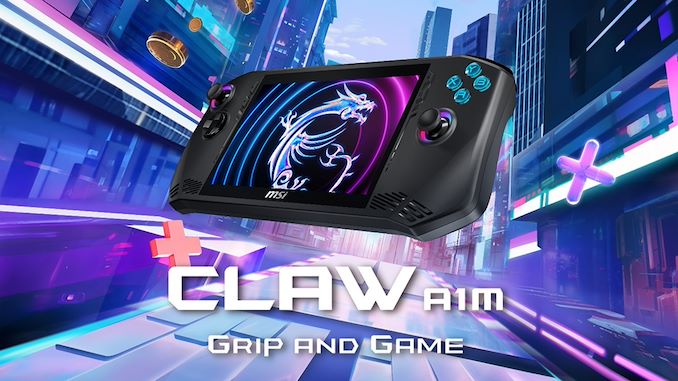

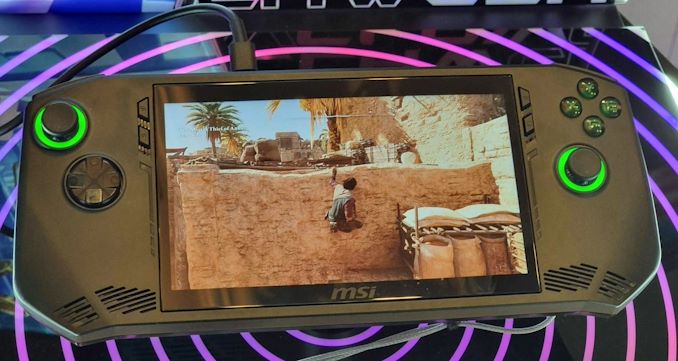
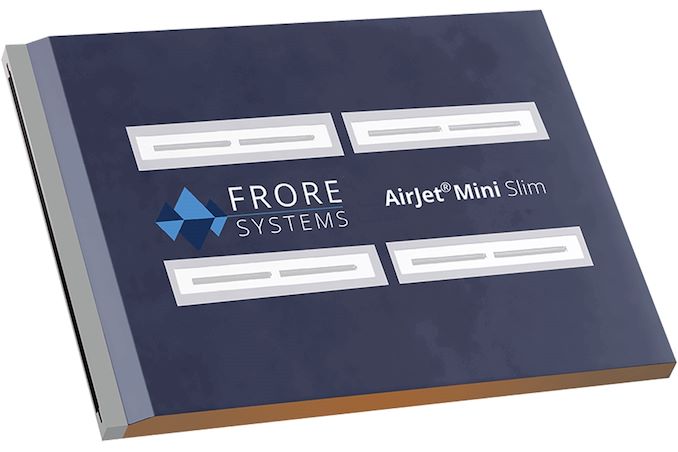
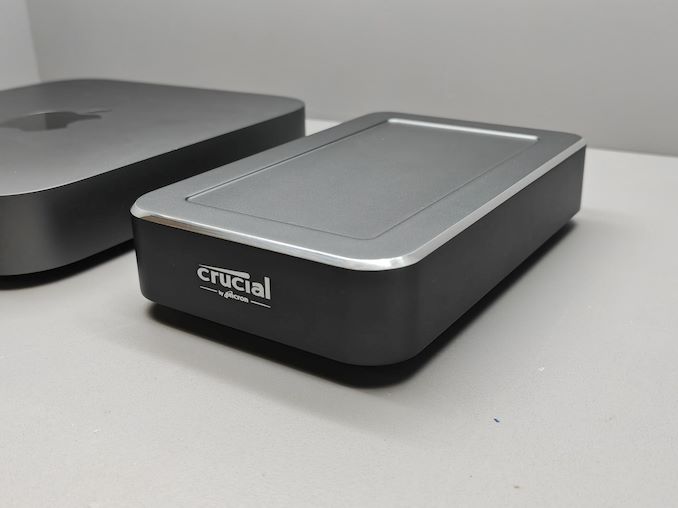
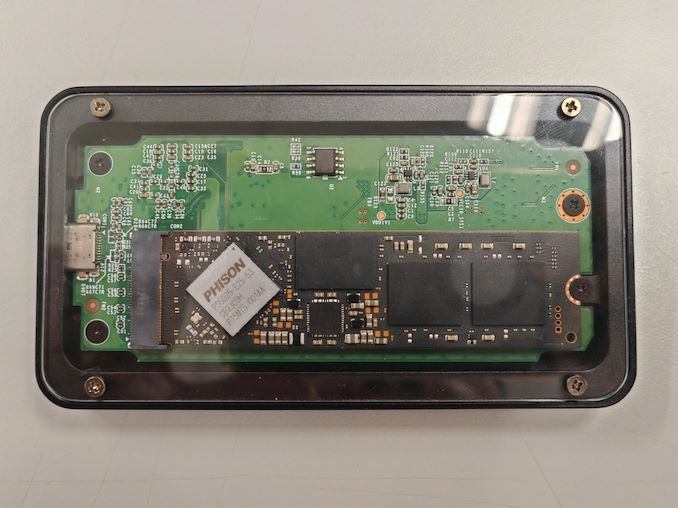
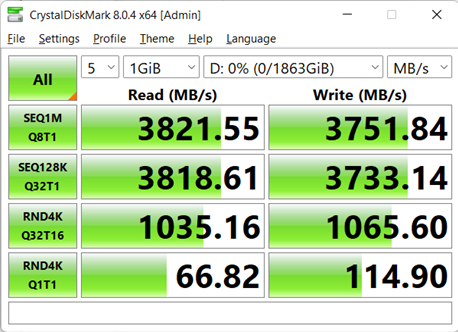

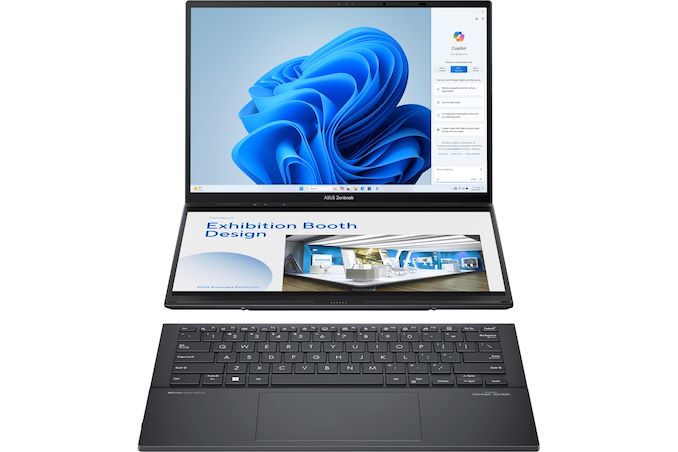
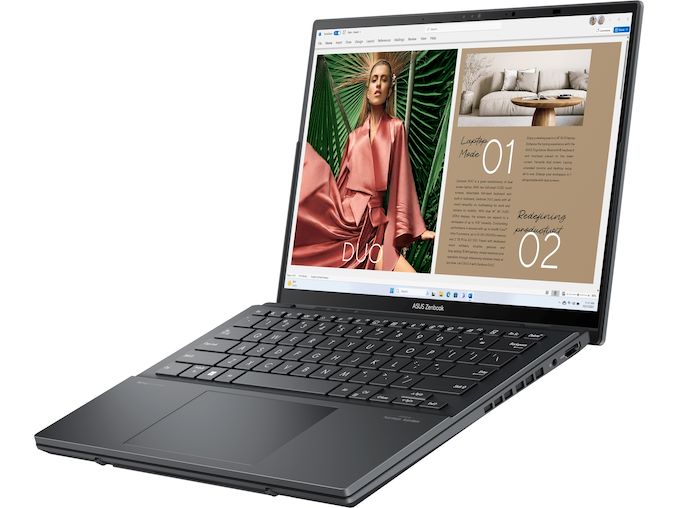


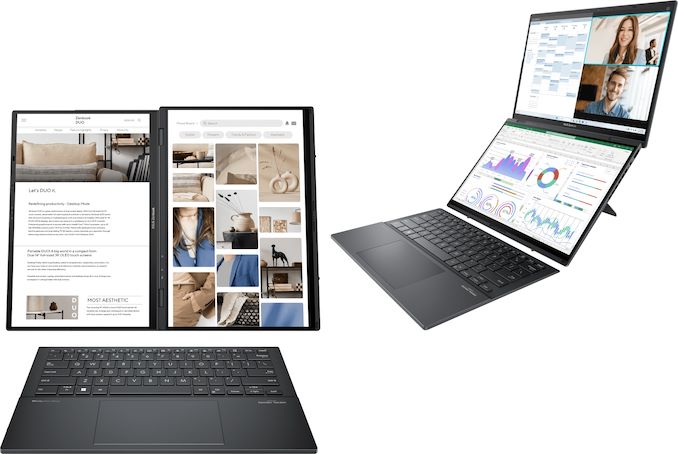

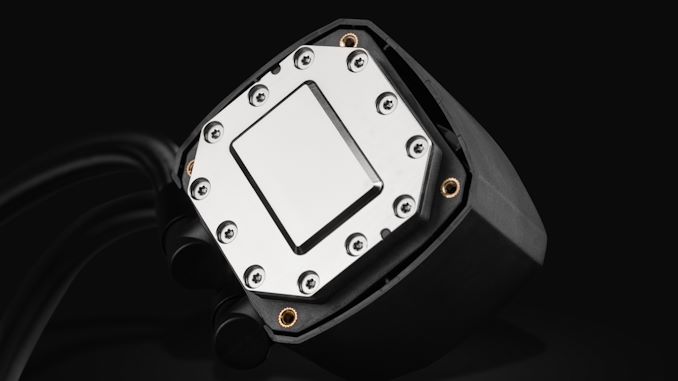
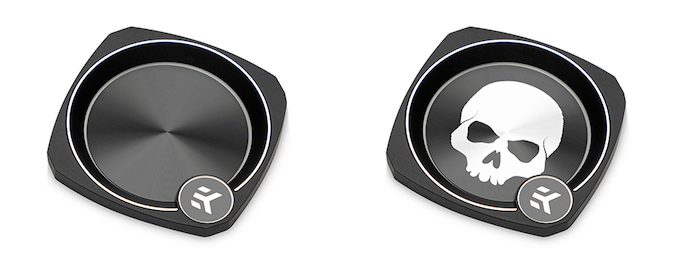
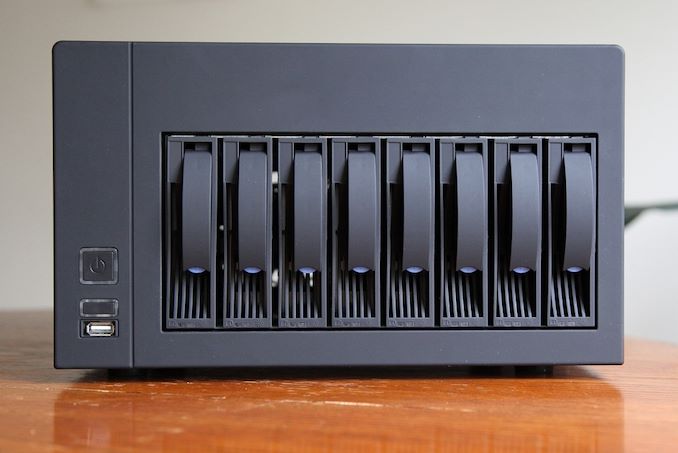
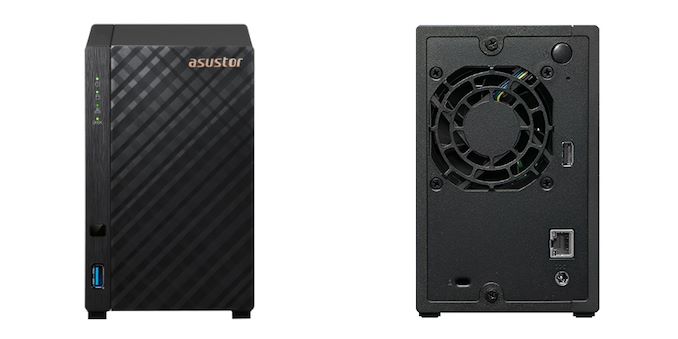
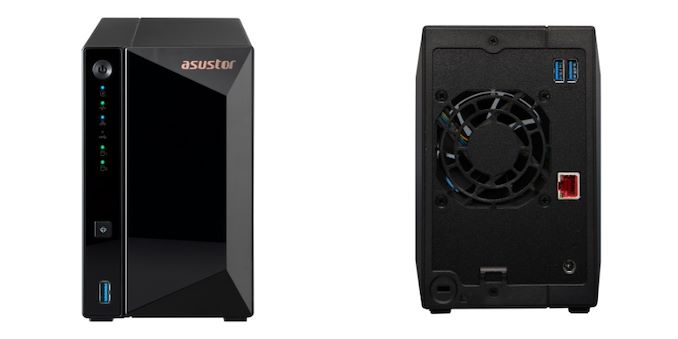


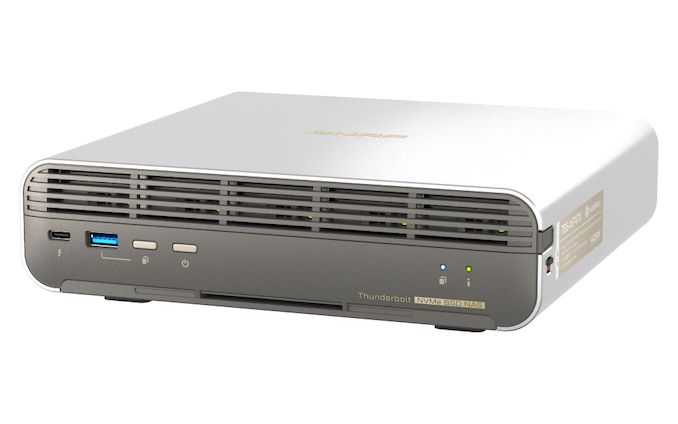



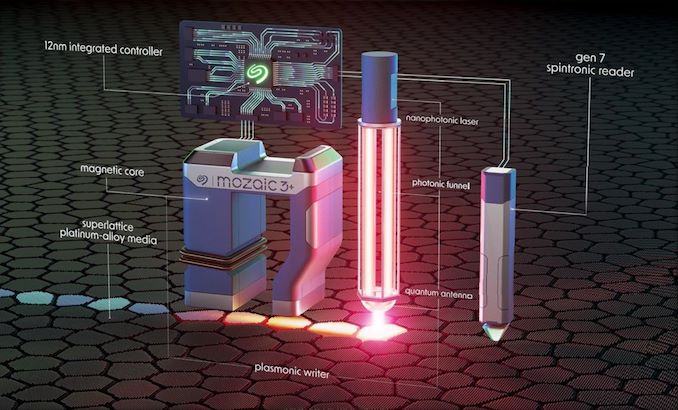
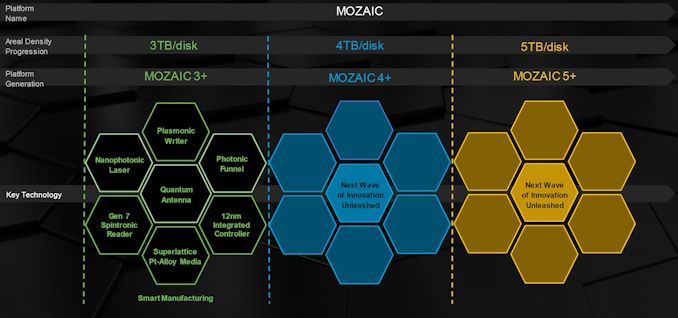

















Bookmarks